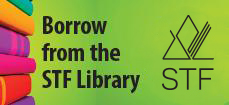Course Configurations
| (a) | Describe the role and importance of budgeting in financial planning for personal and other uses (e.g., organization, club and small-scale event). |
| (b) | Provide examples of the types of income (e.g., employment, gifts, awards and scholarships) and expenses (e.g., fixed and variable) typically included in a personal budget. |
| (c) | Discuss the importance of tracking income and expenses over a period of time prior to developing a personal budget. |
| (d) | Identify reasons why people fail to follow budgets. |
| (e) | Discuss pitfalls of living beyond one’s means. |
| (f) | Provide examples of the types of income and expenses that might be included in a non-personal budget (e.g., organization, club and small-scale event). |
| (g) | Discuss the concept of opportunity cost in determining how to spend money. |
| (h) | Develop a simple budget for self or for another use (e.g., organization, club and small-scale event). |
| (i) | Summarize how budgets will evolve and change as one moves through various life stages. |
| (j) | Examine various cultural, community or religious perspectives on budgeting. |







This Canadian resource supports the Financial Literacy curriculum and provides information at a suitable introductory level. The resource is organized under six headings for a total of 15 modules.
Topics covered:
- Goals, Values and Decision-making
- Getting and Earning Money
- Spending Money and Taking Control
- Borrowing Money and Using Credit
- Saving and Investing Money
- Protecting Assets and Planning for the Future.
The resource includes:
- Student Guide, English or French, free online PDF version or hard copies can be ordered at a minimal fee
- Teacher's Guide, English or French, free online version



This Canadian textbook is divided into five parts:
- Planning Your Personal Finances
- Managing Your Personal Finances
- Insuring Your Assets
- Investing Your Financial Resources
- Controlling Your Financial Future
The resource contains case studies, concept checks, assignments and assessment examples.
There are four purchase options:
- eBook
- eBook only (online version of textbook)
- Connect
- eBook, homework, adaptive assignments and study tools
- Connect and print text
- eBook, homework, adaptive assignments and study tools
- printed textbook
- Print text
- printed textbook only

The Indigenous Edition of Money and Youth builds on the original resource from the Canadian Foundation for Economic Education, CFEE. Damon Johnston, President of the Aboriginal Council of Winnipeg, provided guidance rooted in traditional teachings and the Seven Sacred Laws. Vanessa Everett, CEO of Economic Development with the Keewatin Tribal Council, adapted the original version by Gary Rabbior of CFEE. Input from respected individuals across Turtle Island also helped shape this edition.
Topics covered:
- Goals, Values and Decision-making
- Getting and Earning Money
- Spending Money and Taking Control
- Borrowing Money and Using Credit
- Saving and Investing Money
- Protecting Assets and Planning for the Future.
The resource includes:
- Student Guide, English, free online PDF version or hard copies can be ordered at a minimal fee
- Teacher's Guide, English, free online version

